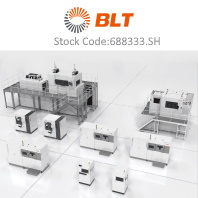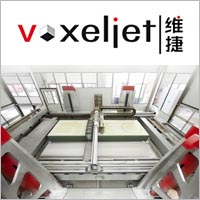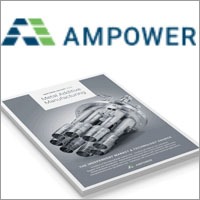在11月5日Inside 3D打印产业全球高峰论坛上德国帕德伯恩大学直接制造研究中心的Eric Klemp博士 (Dr. Eric Klemp from University of Paderborn) 介绍了德国帕德伯恩大学直接制造研究中心,工业革命与增材制造, 增材制造的优势、发展及前景,增材制造在工业领域的应用能力,增材制造面临的行业机遇,科研机构在其中扮演的角色等。
德国帕德伯恩大学直接制造研究中心的作用就象科技孵化器,他们把来自增材制造产业链的资源包括打印材料、打印机、软件对接起来,结合自身以及其他几家高校联盟的科研能力为市场的需求提供打包式的解决方案。
谈到如今被吹捧的天花乱坠的3D打印行业, Klemp博士引用了Gartner发布的报告,3D打印与所有的新兴行业类似会经历技术引爆期、过度期望期、不切实际的破灭期、重新认识期、以及生产稳定器。当然在这个过程中整个行业经历从云计算到大数据以及健全的行业生态圈的发展。
毋庸置疑,增材制造将由于其高度的灵活性、灵活的设计、无需刀具、个性化、低单件成本以及节约能源等优势给包括模具制造、航空航天、牙科、汽车制造、首饰、植入物、手术器材、纺织品、骨科、玩具、运动器材、电子等行业带来深刻影响。
Klemp博士还举了他所在的大学的研究中心的一些项目实例。其中包括增材制造技术在管道件的设计和制造中的优势。包括可以灵活的空气流控制、内置的阀门、内置的泵等。在标准的简单产品制造中,传统制造方法的单件成本低于增材制造,但是在小批量的复杂产品制造中,产品的设计越是复杂,增材制造的单件成本相比于传统制造方法越是具有优势。考虑到增材制造满足按需定制而无需占用库存,那整体成本优势就更加明显了。
另外,增材制造对设计的影响也是十分明显的,由于传统制造方式的限制,很多设计不得不显得累赘,而增材制造的高度自由度使得设计即所得,从而很多产品的重量减轻、性能更好。Klemp博士举了一个连接件的例子,由于复杂的零件可以一次完成,这使得零件的重量减轻了40%,减少了材料的浪费,并仅仅从产品层面极大的节约了60%的成本。
增材制造在制造一些传统工艺无法实现的结构上也显示了极大的优越处。包括这种中空网格结构的散热叶片。 Eric Klemp博士是机械工程博士,曾任博世和西门子家用电器的项目负责人,在Rational AG做过产品工程师,自2009年以来,Eric Klemp博士一直担任德国帕德伯恩大学直接制造研究中心商务总监。
本文由3D科学谷撰写
Dr. Eric Klemp introduced German manufacturing research center, in the University of Paderborn. Also he introduced the development of the additive manufacturing technology, the opportunities, the future and else. University of Paderborn worked with other universities as the technology incubator. They work with the print materials,3D printers, software and else to provide the total solution to the industry demand.
About the hype of the 3D printing, Dr. Klemp cited the Gartner report, 3D printing industry is just like the other emerging industries will experience through innovation trigger, peak of inflated expectations, through of disillusionment, the slope of enlightenment and finally come to the plateau of productivity. Of course, during this process, the 3D print industry experience from cloud computing to big data and finally reach to a sound industry ecosystem.
The opportunities and chances of additive manufacturing include high flexibility, flexible design, no tools, personalized, low cost and energy saving. This brings 3D print unique advantage in the industries of mold manufacturing, aerospace, dental, automobile manufacturing, jewelry, implants, surgical equipment, textiles, Department of orthopedics, toys, sports equipment, electronics and other industries.
Dr. Klemp also cited a number of projects they have done from the university. One example is the pipe design. The 3D print advantage included flexible air flow control, built-in valve, built-in pump and etc.. In the simple product production, the traditional method of manufacturing cost is lower than 3D print, but for the complex design especially in small batch manufacturing, 3D print has more advantage on unit cost. Also 3D print do not involve inventory, the overall cost advantage is more obvious.The highly freedom of 3D print allows the design to be simple, thus to reduce the weight of the product and increase the performance.
Dr. Klemp cited a connector, due to the complexity of the parts can be finished in one time, which makes the part weight less by 40%, and saved the cost of 60%. In addition, for complex inner structure, 3D print will show more advantages. For example the hollow grid structure in the blades.
Dr. Eric Klemp did his PhD at Institute of Mechanical Engineering at TU Clausthal. He was project leader at Bosch and Siemens. Later he became the product manager at Rational AG. Since 2009, Dr. Klemp is commercial director at the Direct Manufacturing Research Center (DMRC) at University of Paderborn.
Reported by 3D Science valley (51shape.com)
















